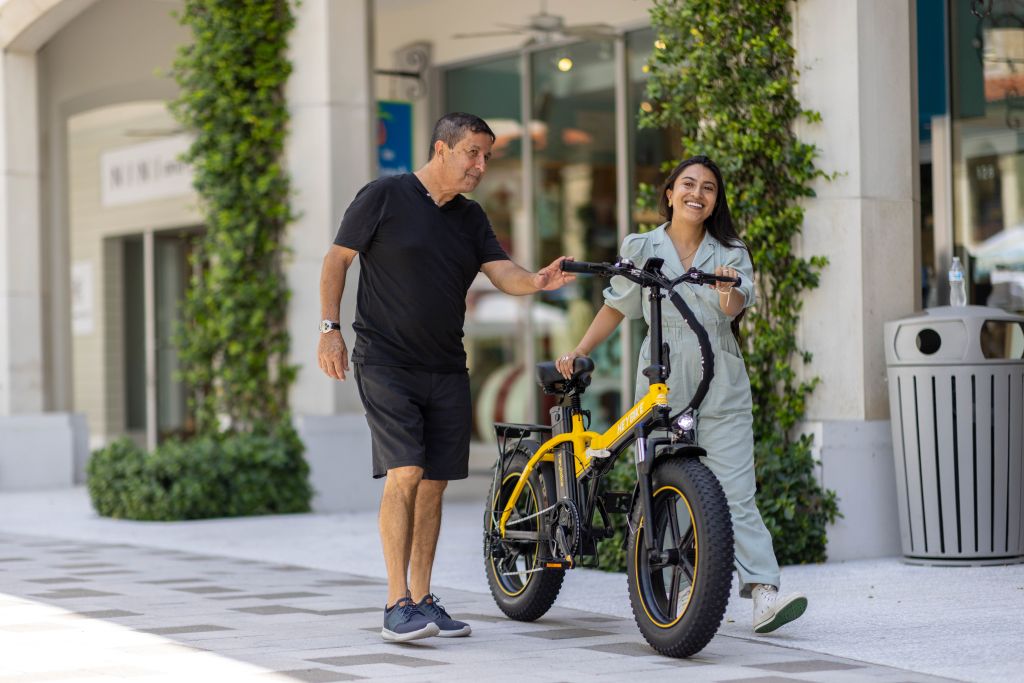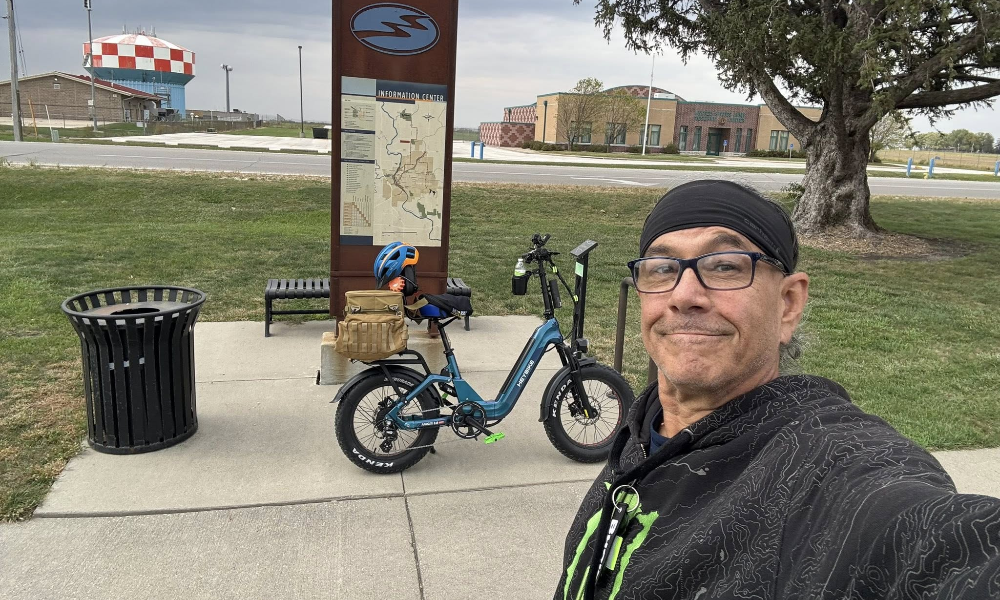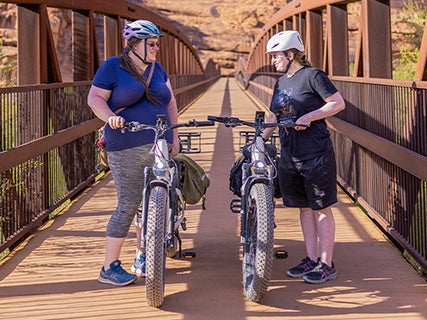Tubeless bike tires offer innovative and contemporary solutions for cyclists. No inner tube is needed, with the tire and rim structure sealing up tightly with air. To assist, a liquid sealant can then work to create an even tighter fix to any minor punctures that may occur.
Mountain biking has mainly adopted this technology, but many road cyclists have recently seen all the advantages of tubeless tires and so, too, have begun using them, patterning their journeys on two wheels after outdoor adventurers. All these perks are well worth exploring in more detail at another opportunity.

Understanding Tubed Tires
What are tubed tires?
A tubed tire consists of several components. At its core, there is a thin inner tube that is filled with air and acts like a balloon in the tire shape. This inner tube must be precisely inflated for an optimal level of firmness. On the other hand, the outside layer of the tire offers important protection to this inner tube and also supplies convenient treading to fit various road conditions. Together, these pieces make up a working tubed tire!
How do tubed tires work?
Setting up a tubed tire system is an easy task. First, the inner tube is put inside the outer tire, getting ready for mounting on the rim. Then, the valve is extended through the hole in said rim. When air is let out of a pump and into the tube, it starts taking form and shape - pushing against the tire sidewalls to provide it support and structure. Finally, as one inflates their tube to their desired pressure, their new assembly is ready for use.
Advantages and disadvantages of tubed tires
Advantages
Easy and Cheap to Repair
Tubed tires are the more economical and simpler option when it comes to repairs. When you get a flat, replacing or patching the inner tube does the trick, saving time, effort and money. Plus, tubes are relatively cheap to replace.
Versatility
The beauty of tubed tires is that they are versatile enough to use in both tubeless and tubed tire set ups, so if you have a deeper cut or accident while out on a trail with a Tubeless system, you can easily revert back to an inner tube without too much trouble.
Simple Installation
Installing and replacing cycling tube is also straightforward and even beginner technophobe cyclist's can quickly pick up the process involved. In comparison with thornproof systems which involve more individual steps, installation of tubes is point-and -shoot!
Disadvantages
Increased Risk of Flats
Tubed tires are more susceptible to a type of flat known as "pinch flat' or "snake bite". This occurs when the tire is compressed against the rim and pinches the inside tube, resulting in an unfortunate puncture on its side walls. This could be worse for those running lower tire pressures or who might opt to stay away from smoother surfaces with riskier packages for rougher terrain.
Lower Traction at High Pressures
Going along this line of route, at higher pressures, tubed tires becomes less flexible and unable to adjust well on discrepancies scattered around contour leveled surfaces which removes overall traction it could provide if run evenly.
Weight
Furthermore, small but not unnecessary weight adds up quickly in regard to big features each bike holds! Indeed, tube might sound as nothing significant yet adding up 2 x tubes when inflated correspond nicely involves regard contribution by all means whether performance alterations or eventual bicycle weight considerations and demands for stats hungry riders!
Understanding Tubeless Tires
What are tubeless tires?
Tubeless tires can work without an inner tube. Instead, the tire and the rim combine to create an airtight relationship, with help from a liquid sealant inserted into the guts of the tire. No longer do you have to struggle changing or replacing your worn out tubes.
Even gaps between tire and rim don't stand a chance thanks to this innovative approach that creates a much stronger seal than before. This eliminates any need for annoying leakage and multiple trips to the repair shop. Out goes tubed tires, in comes tubeless technology!
How do tubeless tires work?
Tubeless tires are quickly becoming the industry standard, thanks to their superior performance and convenience. Instead of relying on a tube to making airtight seal with the rim, they utilize a liquid sealant, which helps to maintain that.
Additionally, this sealant reacts quickly to any small punctures you may encounter, fending off dreaded flats that interrupt some rides. These tires inflate through a valve corded directly to the rim eliminating any need for an extra tube or piece of equipment other than a trusty air pump.
Advantages and disadvantages of tubeless tires
Advantages
Reduced Risk of Flats
Tubeless tires offer a few significant advantages that are not available when using tube tires. One of the most noteworthy benefits is reduced risk of flats, particularly pinch flats or "snake bites" that can occur when in tubed tires when they are compressed against the rim.
Without an inner tube to pinch, these types of flats become virtually eliminated. In addition, sealant used in tubeless tires can patch small punctures from thorns, glass, or other debris instantaneously with air pressure retention maintained.
Improved Traction
Furthermore, run at lower pressure than their tubed counterparts without the fear of a pinch flat, it allows tubeless tires to perform better than regular tubes. This lower pressure generates larger contact area between the wheel and ground that contributes to improved traction and grip for off-road and uneven surface areas.
Smoother Ride
Last but not least, typically smoother rides are experienced with tubeless tire usage as the reduction in air pressure allows them to absorb more shock arising from bumps and potholes consequently providing greater rider comfort.
Disadvantages
Installation Difficulties
Tubeless tires can be a bit more challenging and messy to install than tubed tires. Since an airtight seal must be achieved, the tire needs to sit correctly on the rim while sealant is applied. This process is often times considered quite messy.
Maintenance
Tubeless tires require regular checks and maintenance as the sealant filling the tires needs totten up frequently to avoid drying out every few months. Further, with even sealants, plugs or patches are most likely required for bigger cuts or punctures rather than an inner tube until a perfect repair need executed.
Initial Costs
Initial cost set up fee for tubeless tires may come off as higher rather than conventional tubed tires especially when wheels are not stabilized tubeless ready. Acquisition of required components like tubeless specific rims, a conversion kit, valves and appropriate sealant become common practice in such causes increased fees, but it significantly offers less costs.
Maintaining Tubeless Tires
Maintaining and caring for tubeless tires
Tubeless tires are a staple in any cyclist's bike maintenance. To ensure their full capabilities,regular maintenance needs to be performed. This involves making sure tire pressure is correct by regularly checking it and topping up sealant every couple of months. It's also important to inspect the tire and rim every time to make sure that there isn't any damage that could jeopardize the seal. A healthy seal is key when it comes to keeping your tubeless tires performing optimally during your rides.
Common issues with tubeless tires and how to fix them
Tubeless tires have dedicated fans, but common problems necessitate occasional fixes. Air loss and sealant leaks can occur, but most of the time they're easily solved. A simple solution such as adding more sealant or reseating the tire on the rim can go a long way.
Unfortunately, if you're up against larger punctures or cuts, nothing beats a tubeless tire plug for effectiveness. Get one in your repair kit; being prepared will save you time and frustration when the rainy day arrives.
Conclusion
When it comes to cycling, you need to consider both the type of riding you do and your unique needs when deciding between tubed or tubeless tires. Tubed tires can be economical and optimal for casual bikers, offering easy repair and straightforward maintenance.
Taking it one step further, more serious cyclists can opt for tubeless tires that provide an edge in terms of superior performance, particularly on unpaved terrains. Awareness of the differences between these two tire types is essential to successful purchasing decisions and the most enjoyable cycling journeys.



Share:
Discovering E-Bike Hub Motors: From Basics to Benefits
The Comprehensive Guide to Belt Drive Ebikes